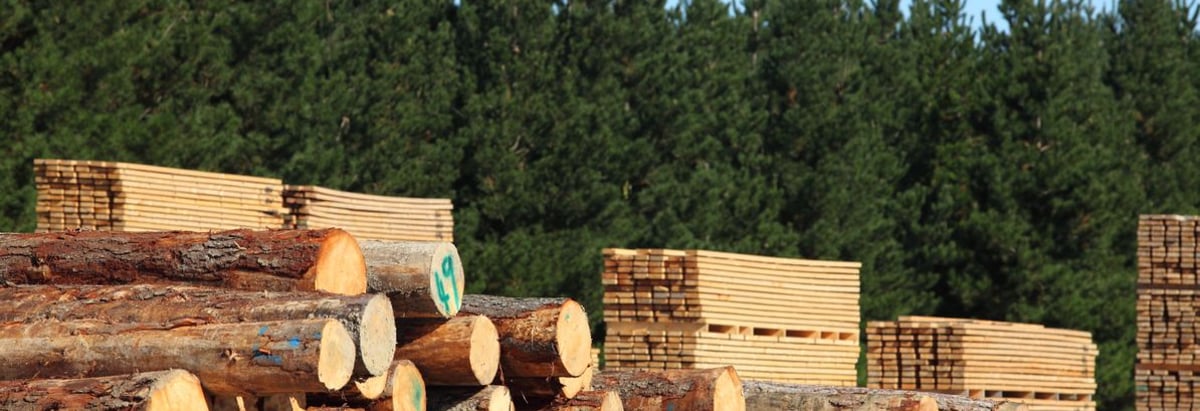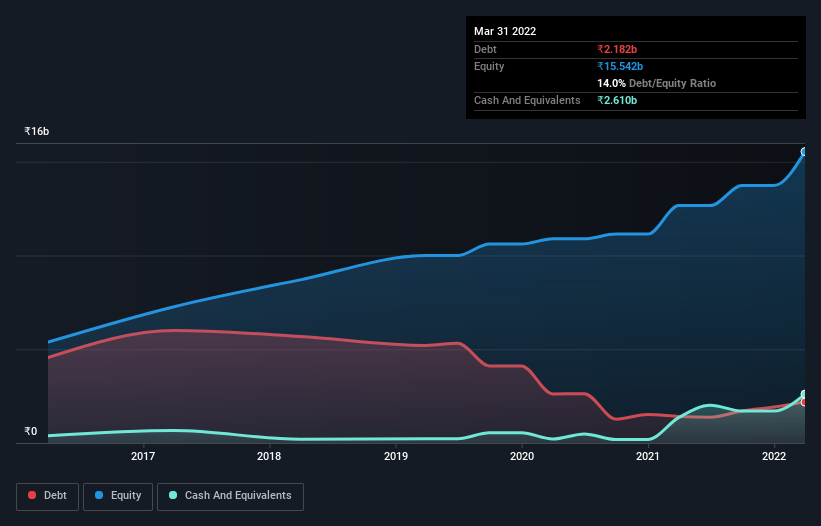- India
- /
- Paper and Forestry Products
- /
- NSEI:CENTURYPLY
We Think Century Plyboards (India) (NSE:CENTURYPLY) Can Manage Its Debt With Ease

The external fund manager backed by Berkshire Hathaway's Charlie Munger, Li Lu, makes no bones about it when he says 'The biggest investment risk is not the volatility of prices, but whether you will suffer a permanent loss of capital.' It's only natural to consider a company's balance sheet when you examine how risky it is, since debt is often involved when a business collapses. As with many other companies Century Plyboards (India) Limited (NSE:CENTURYPLY) makes use of debt. But is this debt a concern to shareholders?
When Is Debt A Problem?
Debt and other liabilities become risky for a business when it cannot easily fulfill those obligations, either with free cash flow or by raising capital at an attractive price. Ultimately, if the company can't fulfill its legal obligations to repay debt, shareholders could walk away with nothing. However, a more frequent (but still costly) occurrence is where a company must issue shares at bargain-basement prices, permanently diluting shareholders, just to shore up its balance sheet. By replacing dilution, though, debt can be an extremely good tool for businesses that need capital to invest in growth at high rates of return. When we think about a company's use of debt, we first look at cash and debt together.
See our latest analysis for Century Plyboards (India)
How Much Debt Does Century Plyboards (India) Carry?
The image below, which you can click on for greater detail, shows that at March 2022 Century Plyboards (India) had debt of ₹2.18b, up from ₹1.41b in one year. But on the other hand it also has ₹2.61b in cash, leading to a ₹428.2m net cash position.

How Strong Is Century Plyboards (India)'s Balance Sheet?
The latest balance sheet data shows that Century Plyboards (India) had liabilities of ₹6.31b due within a year, and liabilities of ₹456.1m falling due after that. Offsetting these obligations, it had cash of ₹2.61b as well as receivables valued at ₹3.63b due within 12 months. So its liabilities total ₹524.8m more than the combination of its cash and short-term receivables.
Having regard to Century Plyboards (India)'s size, it seems that its liquid assets are well balanced with its total liabilities. So it's very unlikely that the ₹118.2b company is short on cash, but still worth keeping an eye on the balance sheet. Despite its noteworthy liabilities, Century Plyboards (India) boasts net cash, so it's fair to say it does not have a heavy debt load!
On top of that, Century Plyboards (India) grew its EBIT by 71% over the last twelve months, and that growth will make it easier to handle its debt. There's no doubt that we learn most about debt from the balance sheet. But it is future earnings, more than anything, that will determine Century Plyboards (India)'s ability to maintain a healthy balance sheet going forward. So if you want to see what the professionals think, you might find this free report on analyst profit forecasts to be interesting.
Finally, while the tax-man may adore accounting profits, lenders only accept cold hard cash. While Century Plyboards (India) has net cash on its balance sheet, it's still worth taking a look at its ability to convert earnings before interest and tax (EBIT) to free cash flow, to help us understand how quickly it is building (or eroding) that cash balance. Over the most recent three years, Century Plyboards (India) recorded free cash flow worth 59% of its EBIT, which is around normal, given free cash flow excludes interest and tax. This free cash flow puts the company in a good position to pay down debt, when appropriate.
Summing up
We could understand if investors are concerned about Century Plyboards (India)'s liabilities, but we can be reassured by the fact it has has net cash of ₹428.2m. And it impressed us with its EBIT growth of 71% over the last year. So is Century Plyboards (India)'s debt a risk? It doesn't seem so to us. There's no doubt that we learn most about debt from the balance sheet. But ultimately, every company can contain risks that exist outside of the balance sheet. For example Century Plyboards (India) has 2 warning signs (and 1 which is concerning) we think you should know about.
Of course, if you're the type of investor who prefers buying stocks without the burden of debt, then don't hesitate to discover our exclusive list of net cash growth stocks, today.
New: AI Stock Screener & Alerts
Our new AI Stock Screener scans the market every day to uncover opportunities.
• Dividend Powerhouses (3%+ Yield)
• Undervalued Small Caps with Insider Buying
• High growth Tech and AI Companies
Or build your own from over 50 metrics.
Have feedback on this article? Concerned about the content? Get in touch with us directly. Alternatively, email editorial-team (at) simplywallst.com.
This article by Simply Wall St is general in nature. We provide commentary based on historical data and analyst forecasts only using an unbiased methodology and our articles are not intended to be financial advice. It does not constitute a recommendation to buy or sell any stock, and does not take account of your objectives, or your financial situation. We aim to bring you long-term focused analysis driven by fundamental data. Note that our analysis may not factor in the latest price-sensitive company announcements or qualitative material. Simply Wall St has no position in any stocks mentioned.
About NSEI:CENTURYPLY
Century Plyboards (India)
Manufactures and sells plywood, laminates, decorative veneers, medium density fiber boards (MDF), pre-laminated boards, particle boards, and flush doors in India.
Reasonable growth potential with mediocre balance sheet.
Similar Companies
Market Insights
Community Narratives


